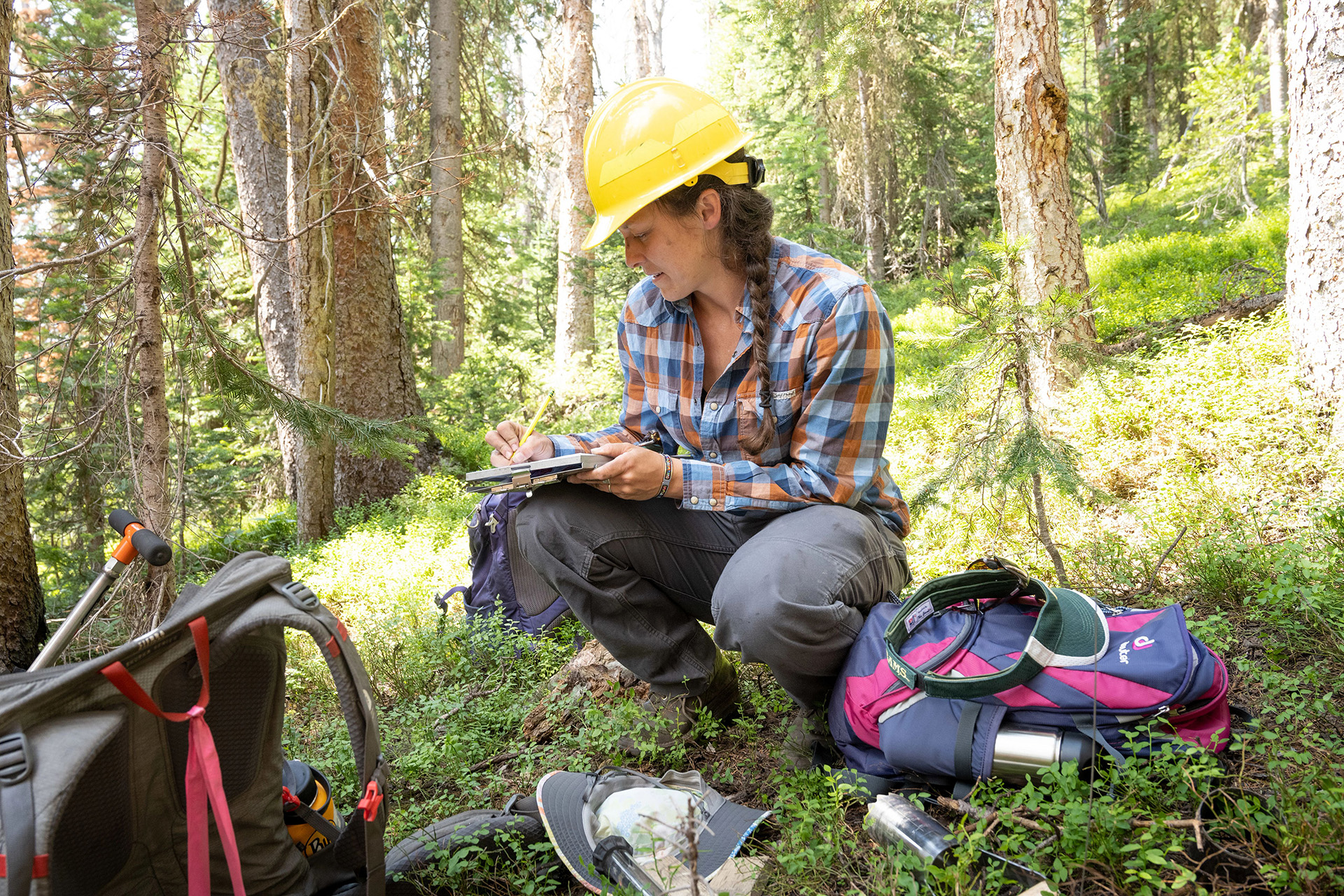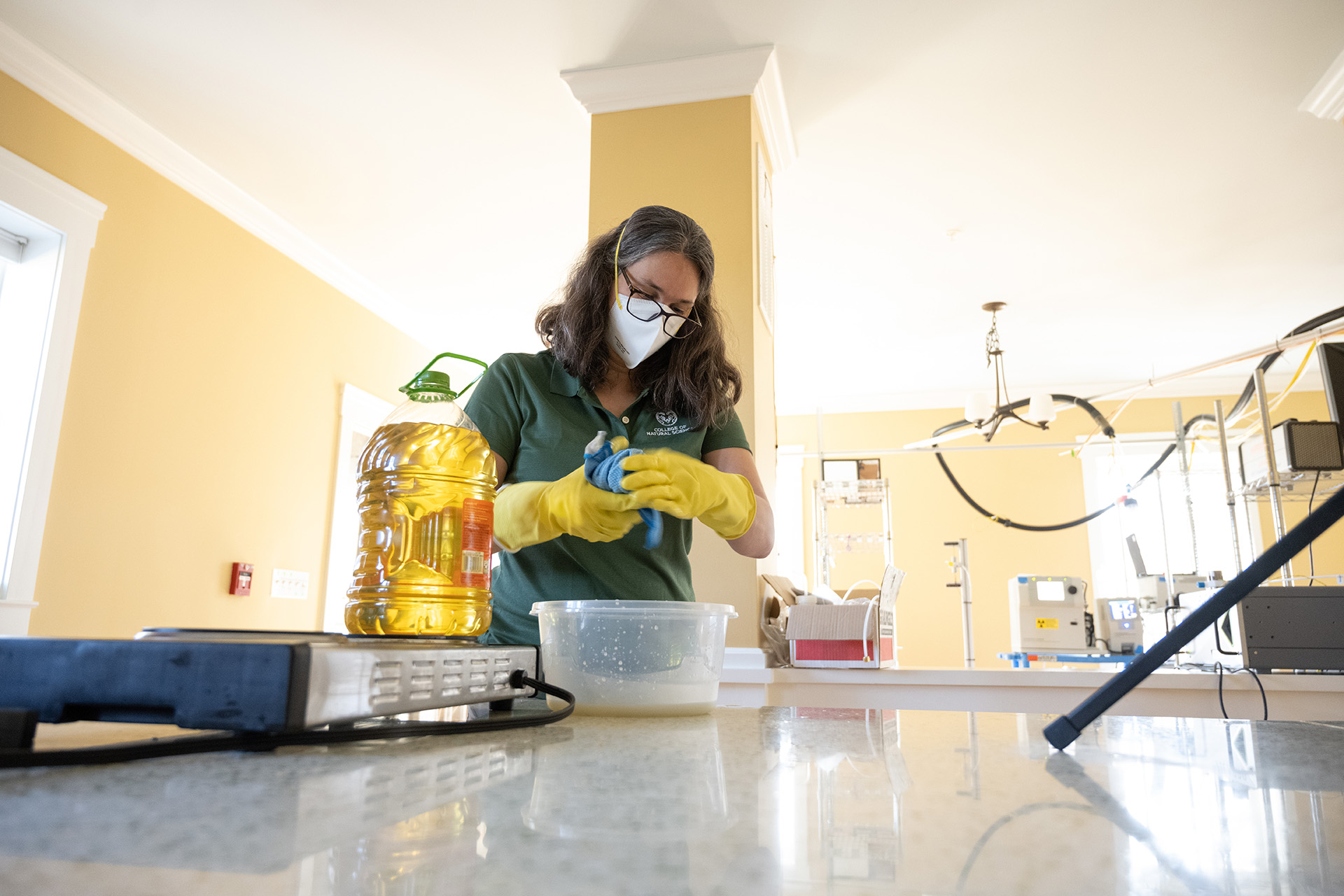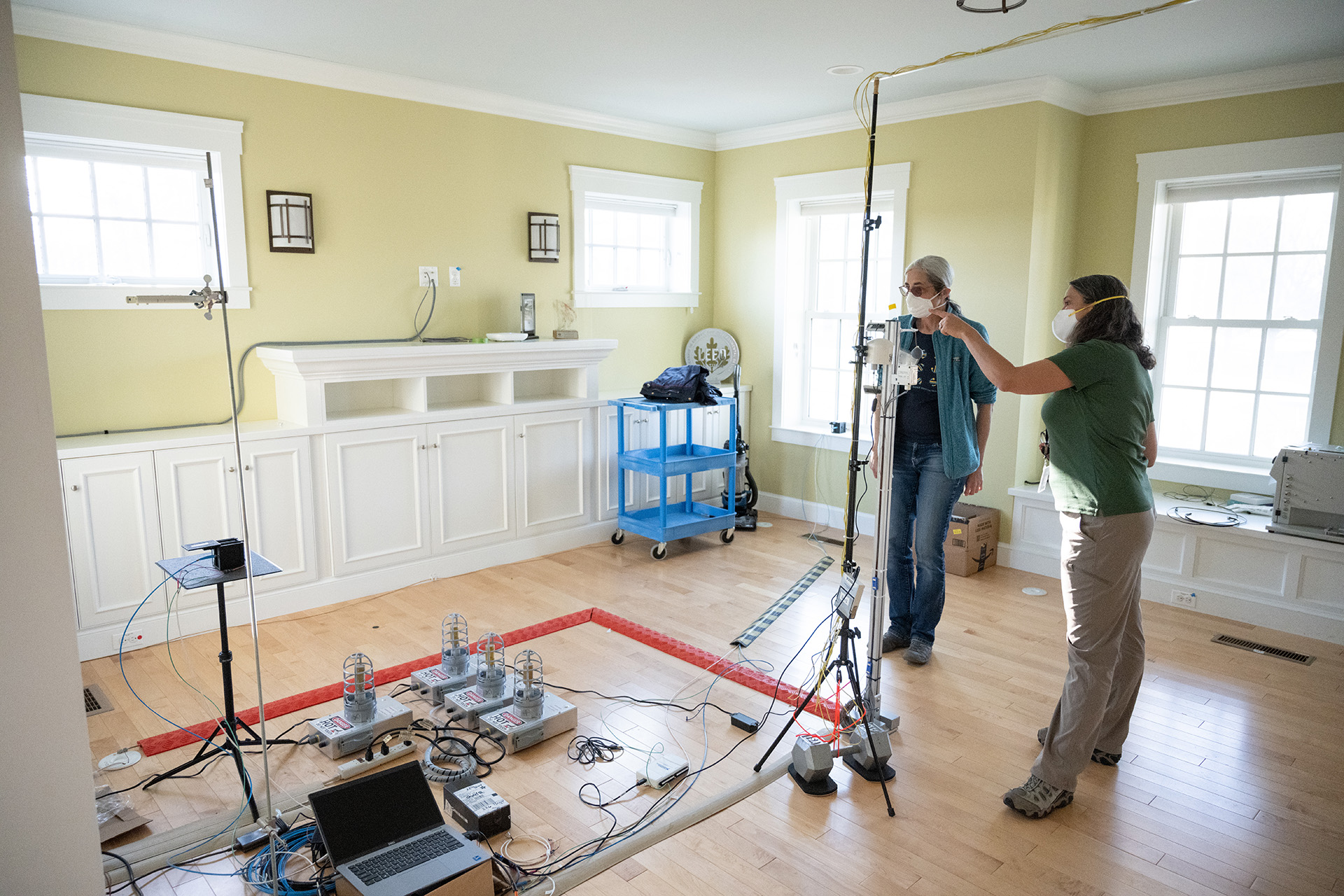
Photo by John Eisele/CSU Photography
What research is being done on wildfires at CSU?
story by Allison Sylte
published July 31, 2023
Smoke from record wildfires in Canada made headlines this year when it drifted everywhere from Chicago to New York, obscuring iconic skylines and significantly impacting air quality in some of the most populated areas of the United States.
It’s a tangible example of the real-world impact of climate change, and something researchers in every college at Colorado State University study. Even though wildfire season technically begins in the early summer, recent events like the December 2021 Marshall Fire in Northern Colorado show that potentially devastating blazes are now a year-round threat.
“We know that Colorado and much of the western U.S. has a risk of extremely dry conditions and anomalously warm days with very low humidity and high winds pretty much any time of the year,” said Becky Bolinger, the assistant state climatologist at the Colorado Climate Center, which is housed in the CSU Department of Atmospheric Science. “These are the ingredients necessary for wildfires, and they’re becoming increasingly easy to find.”
What’s clear is that wildfires are no longer an issue that just impact the Western U.S. CSU researchers are leading the way in furthering knowledge about what’s now a national and global phenomenon, be it through developing models that predict which homes are more likely to burn in a wildfire to studying how burn scars can impact the weather.
Three CSU experts answered some of the most pressing questions about wildfires and smoke in Colorado and beyond.
How does wildfire smoke travel?
While the western United States is no stranger to wildfire smoke obscuring its summer skies, it’s a far more rare phenomenon on the East Coast – but something that could become increasingly common as the fire season gets longer and more severe.
During wildfires, smoke moves through the atmosphere almost like a river, flowing through the jet stream at different rates and altitudes based on wind and time of day.
“At night and early in the mornings, smoke tends to be injected lower in the atmosphere, but as fires grow throughout the day, the impact goes higher and higher,” said Emily Fischer, an associate professor of atmospheric science whose research focuses on wildfire smoke. “Some of the megafires in the western U.S. can inject smoke very, very high – almost as high as the stratosphere, which means that places farther away could experience impacts in air quality.”
“Climate change is already impacting the wildfire season – and the more extreme ones like we had in 2020 will become increasingly common.”
— Emily Fischer, associate professor of atmospheric science
Fischer says smoke can help illustrate how the air we breathe travels from place to place, and in turn, how wildfires and pollution are shared rather than simply regional issues.
“Climate change is already impacting the wildfire season – and the more extreme ones like we had in 2020 will become increasingly common,” she said. “We might not realize how interconnected our air is, and we need to make sure wildfires don’t exacerbate the injustices around heat, air pollution and climate.”
How does wildfire smoke impact air quality and what are the health consequences?


Delphine Farmer, associate professor of chemistry, leads a team of researchers from 10 universities in partnership with the National Institutes of Standards and Technology studying the “Chemical Assessment of Surfaces and Air.” Photos by John Eisele/CSU Photography
Wildfire smoke is made up of gasses and particles that are emitted from the fire and then chemically “cook” in a plume that rises into the atmosphere, ultimately changing chemical form as it drifts in the wind. This means that smoke from a wildfire in Canada will have a different composition closer to its source than when it blankets cities thousands of miles away.
Regardless of the location, these particles have the potential to be harmful, according to Delphine Farmer, a professor in the CSU Department of Chemistry who studies the health impacts of the air we breathe.
“Particulate matter is known to impact cardio-respiratory health – and the ozone that is formed in smoke plumes are a key ingredient of urban smog, and also known to be toxic,” Farmer said.
During smoke events, the Environmental Protection Agency advises most people – especially those who are very young, old or who have preexisting respiratory conditions – to stay inside. Farmer says in especially bad air quality events, wearing a well-fitting N-95 mask could offer some protection if it is necessary to travel outdoors.
But even indoor air might not necessarily be totally safe. Farmer says the problem with air pollution is that it has the ability to infiltrate homes – something that she studied with a large group of fellow researchers during a first-of-its-kind experiment.
“In a severe smoke event, outdoor air pollution can create unhealthy air indoors, so using portable air filters, upgrading the filter in your HVAC and keeping doors and windows closed tight can all be good strategies,” Farmer said.
Sheryl Magzamen, an associate epidemiology professor for the Colorado School of Public Health, said during smoke events, there’s an uptick in emergency room visits and hospitalizations for diseases like asthma and COPD, as well as more prescription refills and doctors visits for these conditions.
“Sadly, our research shows that high levels of smoke is also linked to increased risk of asthma deaths and cardiovascular deaths,” Magzamen said. “Wildfire smoke exposure is also associated with risk of lower birth weight for babies exposed in the womb, and evidence is increasing for a number of diseases – kidney disease, and experimental data showing evidence of mechanisms that may lead to poor neurocognitive outcomes.”
“In a severe smoke event, outdoor air pollution can create unhealthy air indoors, so using portable air filters, upgrading the filter in your HVAC and keeping doors and windows closed tight can all be good strategies.”
— Delphine Farmer, associate professor of chemistry
During the record 2020 wildfire season, Magzamen said one in seven U.S. residents was exposed to at least one day of unhealthy air quality, and though it’s hard to quantify the long-term consequences of smoke exposure, she said they’ll likely become more apparent in the years to come.
“Our outdoor environments are changing rapidly due to climate change, and our indoor environments are difficult to measure,” Magzamen said. “But over time, we can likely expect more exacerbations of existing disease – more trips to the emergency department, medication refills, more hospitalizations – especially during summertime when smoke tends to be high, and asthma exacerbations tend to be lower.”
What is the 2023 wildfire outlook for Colorado?
Colorado is drought-free for the first time since 2019 – and strong snowpack compounded with a wet June has moistened the soil to the point where there isn’t a huge threat of an extremely active wildfire season, Bolinger said.
However, conditions can quickly change.
“I think we’re in a good place in terms of not having to worry about those large, devastating wildfires as we go into the fall,” Bolinger said. “Now on the flip side of that, you’re getting a lot of moisture, which is a good thing, but it’s also creating a lot of growth in the vegetation. And when we inevitably dry out, this will be a big source of fuel for those very large and uncontrollable fires.”
That’s why Bolinger said forest and rangeland management will be key to helping to mitigate the potentially devastating wildfires that could spark when conditions allow.
“Prevention needs to happen before the next peak wildfire season arrives,” Bolinger said. “People need to keep talking about what we are doing to keep vegetation under control in our forests, and even our cities and neighborhoods with open spaces.”
Summers of Smoke
For decades, Colorado State University has been at the forefront of fire science, earning its reputation as one of the leading institutions studying wildfires. Explore other stories on wildfire research at CSU.